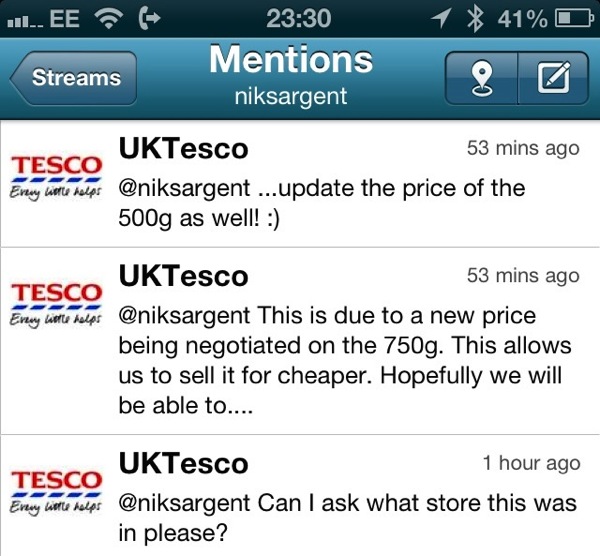Advice for entrepreneurs taking their first steps
/Starting a new business is an exciting and challenging journey. As a new entrepreneur, you will be faced with many decisions, challenges, and opportunities. However, it's not uncommon for first-time entrepreneurs to make rookie mistakes that can hurt their business. In this article, we'll explore common rookie mistakes and strategies on how to avoid them, to help make your journey as an entrepreneur smoother and more successful.
Not Conducting Enough Market Research
One of the most common mistakes made by new entrepreneurs is not conducting enough market research. It's essential to research your target market, your competition, and the trends in your industry. This information can help you create a business plan that is tailored to your specific market and can help you avoid costly mistakes down the road.
To avoid this mistake, spend time researching your market, talking to potential customers, and analyzing your competition. Use this information to refine your business plan and ensure that your product or service meets the needs of your target market.
Mistake #1: Lack of Market Research
One of the biggest mistakes that new entrepreneurs make is not conducting proper market research. Without understanding the market, it’s difficult to develop a product or service that meets the needs of potential customers. Market research involves identifying the target audience, analyzing competitors, and determining the demand for your product or service.
Strategy: Conduct thorough market research before launching your business. This can include online research, surveys, and focus groups. Once you have a good understanding of the market, you can use the information to refine your product or service and develop a marketing strategy.
Not Having a Clear Business Plan
Another common mistake made by new entrepreneurs is not having a clear business plan. A business plan outlines your goals, strategies, and tactics for achieving success. Without a clear plan, it's easy to lose focus and direction.
To avoid this mistake, create a detailed business plan that outlines your goals, strategies, and tactics. Make sure your plan includes financial projections, marketing strategies, and a timeline for achieving your goals.
Mistake #2: Poor Financial Management
Many new entrepreneurs struggle with financial management, including underestimating start-up costs, not keeping accurate records, and failing to plan for unexpected expenses. Poor financial management can lead to cash flow problems, debt, and even bankruptcy.
Strategy: Develop a realistic budget and financial plan. Consider all costs associated with starting and running your business, including equipment, inventory, rent, utilities, and marketing expenses. Keep accurate records and regularly review your financial statements to monitor your cash flow and make adjustments as needed.
Not Having Enough Funding
Starting a business requires capital, and many new entrepreneurs underestimate the amount of funding they need. Without enough funding, it's challenging to get your business off the ground and grow it.
To avoid this mistake, create a realistic budget that includes all of your startup costs, such as equipment, inventory, and marketing expenses. Consider applying for loans, grants, or other forms of funding to help finance your business.
Not Focusing on Customer Acquisition
Many new entrepreneurs focus on product development and forget about customer acquisition. Without customers, your business will struggle to survive.
To avoid this mistake, make customer acquisition a priority. Develop marketing strategies that target your ideal customer, and focus on building relationships with your customers to keep them coming back.
Mistake #5: Overreliance on a Single Customer or Client
Relying too heavily on a single customer or client can be risky. If that customer or client decides to take their business elsewhere, it can have a significant impact on your revenue and profitability
Not Having a Support Network
Entrepreneurship can be a lonely journey, and many new entrepreneurs underestimate the importance of having a support network. Having a mentor or advisor can provide valuable guidance and support as you navigate the challenges of starting a business.
To avoid this mistake, seek out mentors and advisors who can provide guidance and support. Join networking groups, attend industry events, and connect with other entrepreneurs to build your support network.
Mistake #3: Not Building a Strong Team
Another common mistake is not building a strong team. Many first-time entrepreneurs try to do everything themselves or hire friends and family members without considering their skills and experience.
Strategy: Hire the right people for the job. Look for individuals with experience and skills that complement your own. Consider outsourcing tasks that you don’t have the expertise for. Develop a strong company culture and invest in training and development for your team.
Not Being Flexible
Starting a business requires flexibility, and many new entrepreneurs struggle to adapt to changing circumstances. It's essential to be open to new ideas, feedback, and opportunities.
To avoid this mistake, be willing to pivot your business strategy if necessary. Be open to feedback from customers, employees, and advisors.
Mistake #4: Failing to Adapt to Change
Businesses are constantly evolving, and new entrepreneurs must be willing to adapt to changes in the market, technology, and consumer preferences. Failing to adapt can lead to missed opportunities and decreased competitiveness.
Strategy: Stay informed about industry trends and changes. Be open to new ideas and be willing to make changes to your business model as needed. Build a culture of innovation and encourage your team to share their ideas and suggestions.







